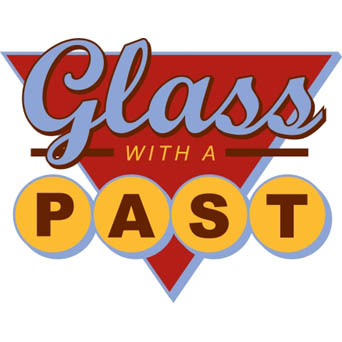- Requires mechanical skill, strength and dexterity.
Recently, one of our readers, Beverly Frey conducted a series of experiments making bottle glass frit using her kiln and cold water. She shared her results with us on facebook and has generously agreed to share her results in a blog post as well.
**************

I’ve made lots of drinking glasses in the past. I saved the bottle tops that I cut off (because I save EVERYTHING!) and have discovered a neat trick for making frit. Take your scrap glass and heat it in the kiln to about 1000 degrees. Take it out and put it in a bucket of cold water. The first time I did this I expected the glass to blow apart. At that temperature, it doesn’t. It fractures throughout the glass piece, but stays intact. When I make frit from it, the frit has squared-off edges instead of sharp, pointy edges. Kind of like what happens when you break tempered glass. Making frit from this point is much easier and is a lot more comfortable to handle. Here are some pics of what the glass looks like after it comes out of the water bucket. You have to be a little more cautious than when handling unfractured glass, but you can easily pick it up and move it around, then break it with a hammer and make it into smaller frit.

This is what those fractured bottle tops look like after being broken up by a hammer. See – edges are squarish rather than sharp and spiney.

Jodi asked what size frit I get from the 1000 degree glass dumped in cold water. Here are pictures. What you see in the pictures is about 1/2 of a gallon plastic bag. This is after smashing it with a hammer for about 1 minute. I get from about 1″ or so to tiny pieces. I’ve heard that if you go hotter it will fracture into REALLY small pieces, but I haven’t tried it yet. I’ll try 1200 degrees next time and take pictures of what happens.

This is the frit I made today in the kiln. I took it up to 1400 and the glass did get quite sticky. When I dumped it in the water it didn’t explode, it just fizzled. The size of the frit is a little larger than Bullseye coarse frit. I did end up with a few large pieces, but they were easy to break apart with my fingers. Next, I’m going to try it at about 1350 and see if it still breaks up small without sticking. This is a pretty good size to start out with to crush it down, though. Much better than larger pieces before.
Looks like 1250 is the best temperature for making frit. The glass isn’t sticky at that temperature, but breaks up really easily into frit that is just a bit larger than Bullseye coarse. I’ve tried 1400, 1350 and 1250 today, and 1250 was the best.
**************
Beverly Frey lives in Fairbanks, Alaska and has been playing with glass for about 6 years. She started out with art glass and moved pretty quickly to bottle and window glass. She’s learned a lot from Glass With a Past and has experimented a lot. Currently, she’s working with using the techniques of David Alcala and his frit pictures, using bottle frit to make them. Who knows what she’ll be experimenting with in 6 months!






